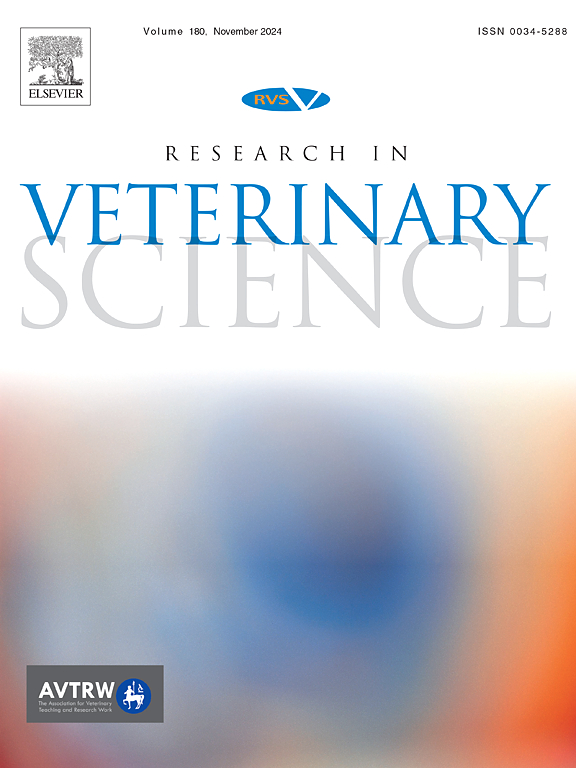Analysis of ventricular free wall ratios and cardiac chamber weights in koalas, common ringtail possums, and common brushtail possums
IF 2.2
3区 农林科学
Q1 VETERINARY SCIENCES
引用次数: 0
Abstract
Understanding cardiac morphology is essential for elucidating the physiological adaptations of marsupials to their environment, but there is currently a lack of comparative data between species. Therefore, in this study, we investigated multiple aspects of heart morphology in three Australian marsupials: the koala (Phascolarctos cinereus), the common ringtail possum (Pseudocheirus peregrinus), and the common brushtail possum (Trichosurus vulpecula). Cadavers of adult koalas (n = 16), common ringtail possums (n = 16), and common brushtail possums (n = 18) were obtained through veterinary donations. Standard anatomical measurements were conducted to determine body, brain, and heart weights, and heart dimensions, including width, length, and ventricular wall thickness. We found significant morphological differences between the three species, as well as in comparison to other mammals. Koalas had a rounder heart shape and a proportionally smaller brain than ringtail and brushtail possums. All three species had higher left ventricular free wall to right ventricular free wall thickness ratios and lower right ventricle to left ventricle weight ratios than other mammals. In addition, heart weight as a percentage of body weight was lower than that reported for other marsupials. Our results demonstrate that the cardiac morphology of Australian marsupials differs both between species and in comparison to other mammals, possibly owing to an evolutionary response to the physiological demands of their ecological niches.
考拉、普通环尾负鼠和普通刷尾负鼠心室游离壁比和心室重量分析
了解心脏形态对于阐明有袋动物对环境的生理适应至关重要,但目前缺乏物种之间的比较数据。因此,本研究对考拉(Phascolarctos cinereus)、普通环尾负鼠(Pseudocheirus peregrinus)和普通刷尾负鼠(Trichosurus vulpecula)这三种澳大利亚有袋动物的心脏形态学进行了多方面的研究。通过兽医捐赠获得成年无尾熊(n = 16)、普通环尾负鼠(n = 16)和普通帚尾负鼠(n = 18)的尸体。进行标准的解剖测量,以确定身体、大脑和心脏的重量,以及心脏的尺寸,包括宽度、长度和心室壁厚度。我们发现了这三个物种之间以及与其他哺乳动物相比的显著形态学差异。考拉的心脏形状更圆,大脑也比环尾负鼠和帚尾负鼠小。与其他哺乳动物相比,这三种动物的左心室自由壁与右心室自由壁厚度比均较高,右心室与左心室重量比均较低。此外,心脏重量占体重的百分比低于其他有袋动物。我们的研究结果表明,澳大利亚有袋动物的心脏形态在物种之间以及与其他哺乳动物相比都有所不同,这可能是由于对其生态位生理需求的进化反应。
本文章由计算机程序翻译,如有差异,请以英文原文为准。
求助全文
约1分钟内获得全文
求助全文
来源期刊

Research in veterinary science
农林科学-兽医学
CiteScore
4.40
自引率
4.20%
发文量
312
审稿时长
75 days
期刊介绍:
Research in Veterinary Science is an International multi-disciplinary journal publishing original articles, reviews and short communications of a high scientific and ethical standard in all aspects of veterinary and biomedical research.
The primary aim of the journal is to inform veterinary and biomedical scientists of significant advances in veterinary and related research through prompt publication and dissemination. Secondly, the journal aims to provide a general multi-disciplinary forum for discussion and debate of news and issues concerning veterinary science. Thirdly, to promote the dissemination of knowledge to a broader range of professions, globally.
High quality papers on all species of animals are considered, particularly those considered to be of high scientific importance and originality, and with interdisciplinary interest. The journal encourages papers providing results that have clear implications for understanding disease pathogenesis and for the development of control measures or treatments, as well as those dealing with a comparative biomedical approach, which represents a substantial improvement to animal and human health.
Studies without a robust scientific hypothesis or that are preliminary, or of weak originality, as well as negative results, are not appropriate for the journal. Furthermore, observational approaches, case studies or field reports lacking an advancement in general knowledge do not fall within the scope of the journal.
 求助内容:
求助内容: 应助结果提醒方式:
应助结果提醒方式:


